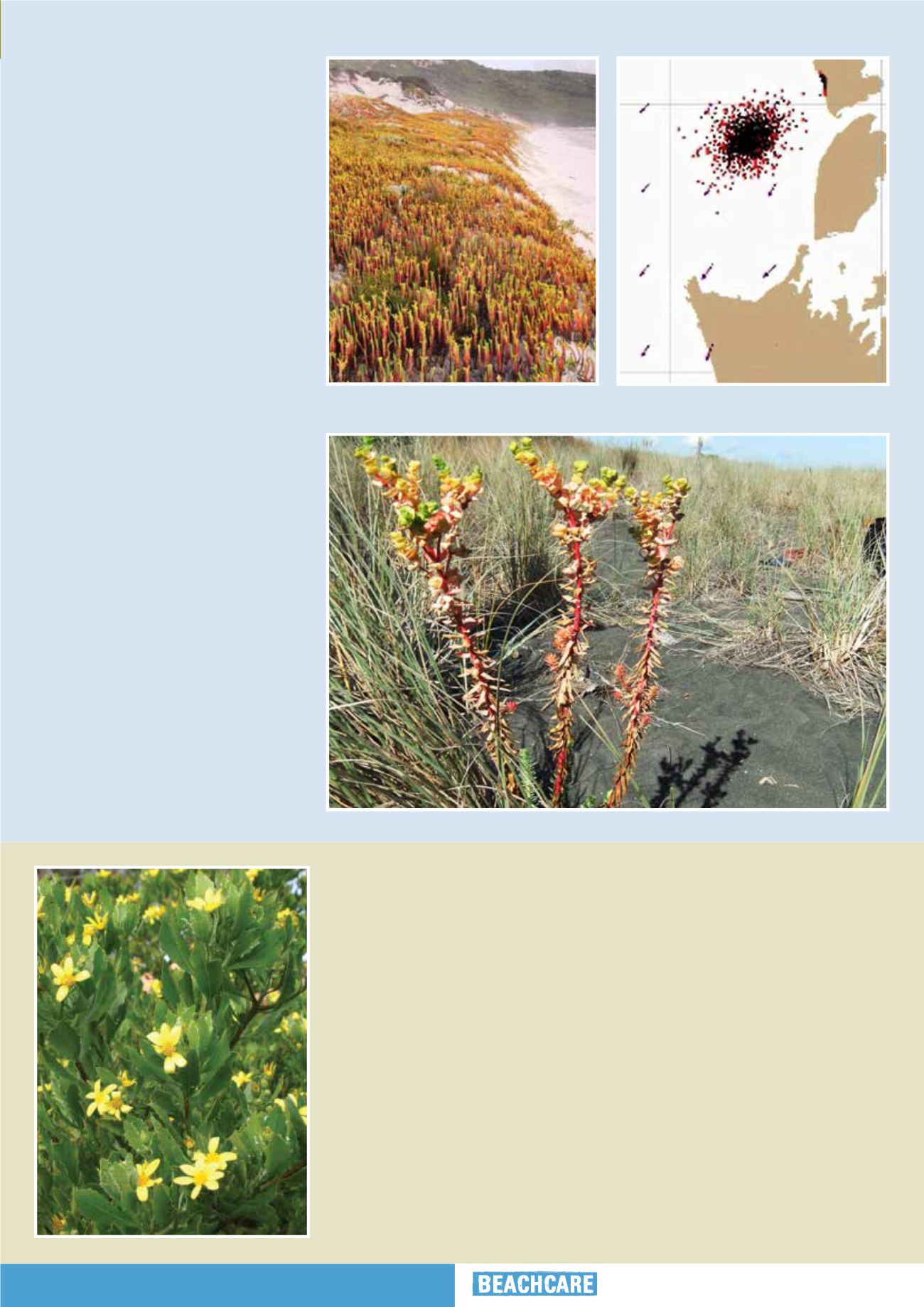
21
Magazine
Pest plant
profiles
Euphorbia paralias
incursion update
As reported in the last Beachcare Magazine,
Euphorbia paralias, a type of European sea
spurge, has been found at Aotea Harbour,
creating concern that the weed may spread. It
is believed to have reached New Zealand on sea
currents from Australia, where it has caused
major environmental problems in Tasmania
and Victoria by displacing native plants and
changing natural patterns of sand movement.
Euphorbia paralias can grow to one metre high
in dense clusters. It has multiple stems that are
often reddish at the base, and its spiky, tightly-
packed blue-green leaves are between 4mm and
20mm long. Green flowers bloom at the stem
tips from September to May, and the flower
stems die off every year.
The plant looks similar to the rare native shore
spurge and to New Zealand linen flax. However,
native shore spurge has much larger leaves that
are 30-80mm long, while the stems of New
Zealand linen flax are not reddish at the base.
If you find any of the plants:
• do not disturb, as this could spread the seeds
• take a photo
• note the location as accurately as possible
(GPS coordinates are best)
• call the Ministry for Primary Industries exotic
pest line on 0800 80 99 66.
Boneseed
Boneseed (Chrysanthemoides monilifera) is a
threat to low coastal vegetation, where it can
rapidly take over and replace native plants.
It is a fast growing shrub that can produce
up to 50,000 seeds a year. Boneseed is a
‘containment’ pest, requiring the removal of all
plants.
Boneseed is also known as salt bush or bitou
bush. Boneseed shades out seedling trees like
pōhutukawa that need a lot of light to survive.
Its thick growth can also restrict people’s access
to beaches.
Boneseed can be difficult to control because of
the large numbers of seeds it produces. Seeds
can also remain dormant in the soil for up to
10 years. Birds and possums eat the fleshy fruit
and spread undigested seeds into neighbouring
shrub lands and coastal forests.
Boneseed grows best in dry sunny conditions in
coastal areas, cliffs, sand dunes and wasteland.
It doesn’t like heavy shade and wet soils.
Identifying features:
• Bushy shrub up to three metres tall.
• Leathery, paddle-shaped leaves, with toothed
edges and a powdery surface.
• Yellow daisy-like flowers from September to
February.
• Clusters of small fruit that turn from green to
black when mature.
• Seeds are bone-like in colour and extremely
hard.
For additional advice and information ring
0800 BIOSEC (0800 246 732).
For more information on pest plants, check out
Infestation of Euphorbia paralias at Squeaky Beach,
Victoria, Australia. Photo: Mike Hilton.
Modelling of potential seed dispersal helped with
planning the survey of the surrounding coastline.
Euphorbia paralias in the dunes at Aotea north head. Photo: Trevor James.


